‘Nutri gardens’ improving dietary diversity and nutritional status of rural women in Odisha
Under the Odisha Livelihoods Mission, to address under-nutrition and anaemia in young women, about hundred thousand vegetable ‘nutri gardens’ have already been set up by the women self-help groups. This year the target is five lakh such kitchen gardens.

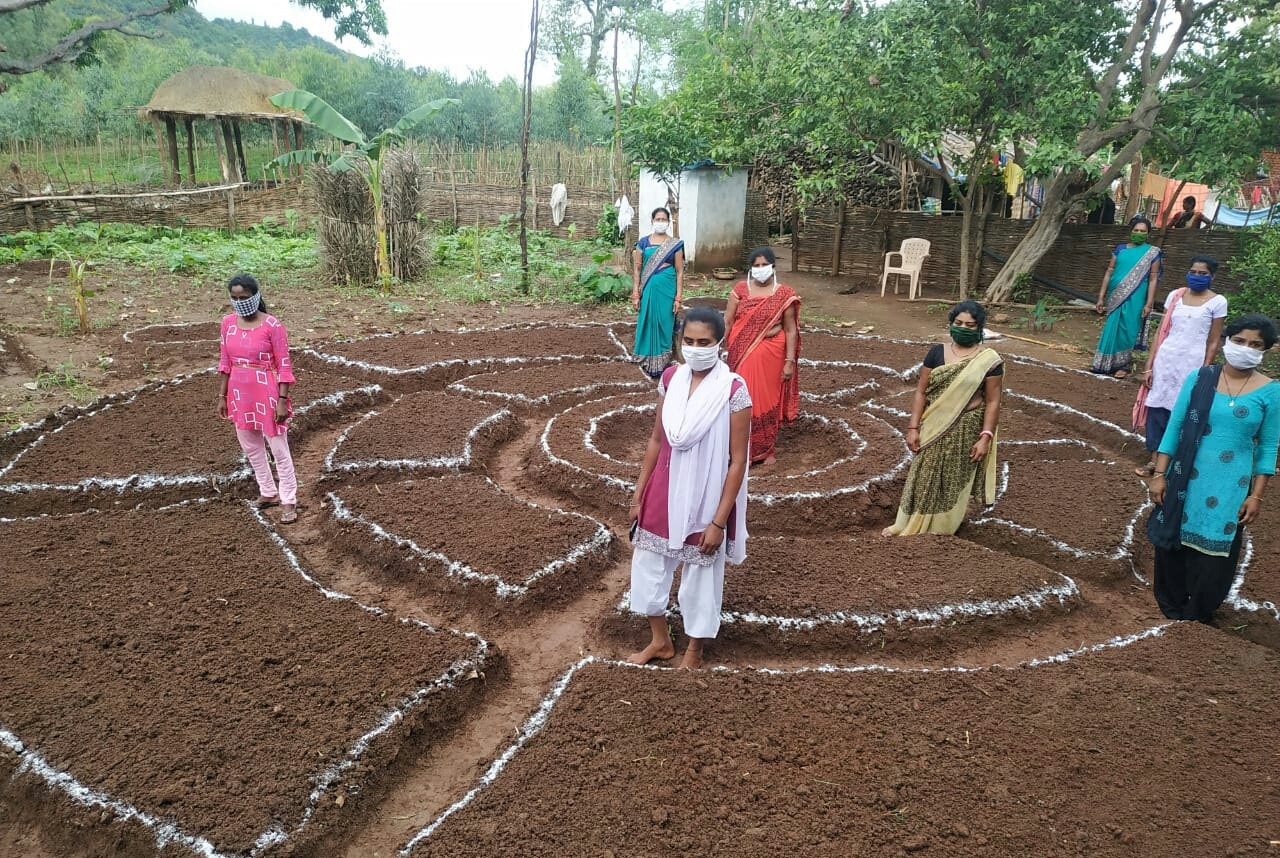
Nutri gardens aim to address undernutrition and anaemia in young women in Odisha. Photo by arrangement
Shraddhanjali Pradhani can’t wait to sow the seeds of her favourite vegetables in her 2.5-decimal (about 1,000 square feet) kitchen garden, now rechristened as a ‘nutri garden’. A resident of Chandanpur village in Lanjigarh block of Odisha’s Kalahandi district, Pradhani, along with her husband, prepared her backyard garden last month.
“Usually, I buy vegetables from the market. But this time I want to grow them myself in our garden. I am waiting for the seeds to be distributed sometime next week,” Pradhani told Gaon Connection.
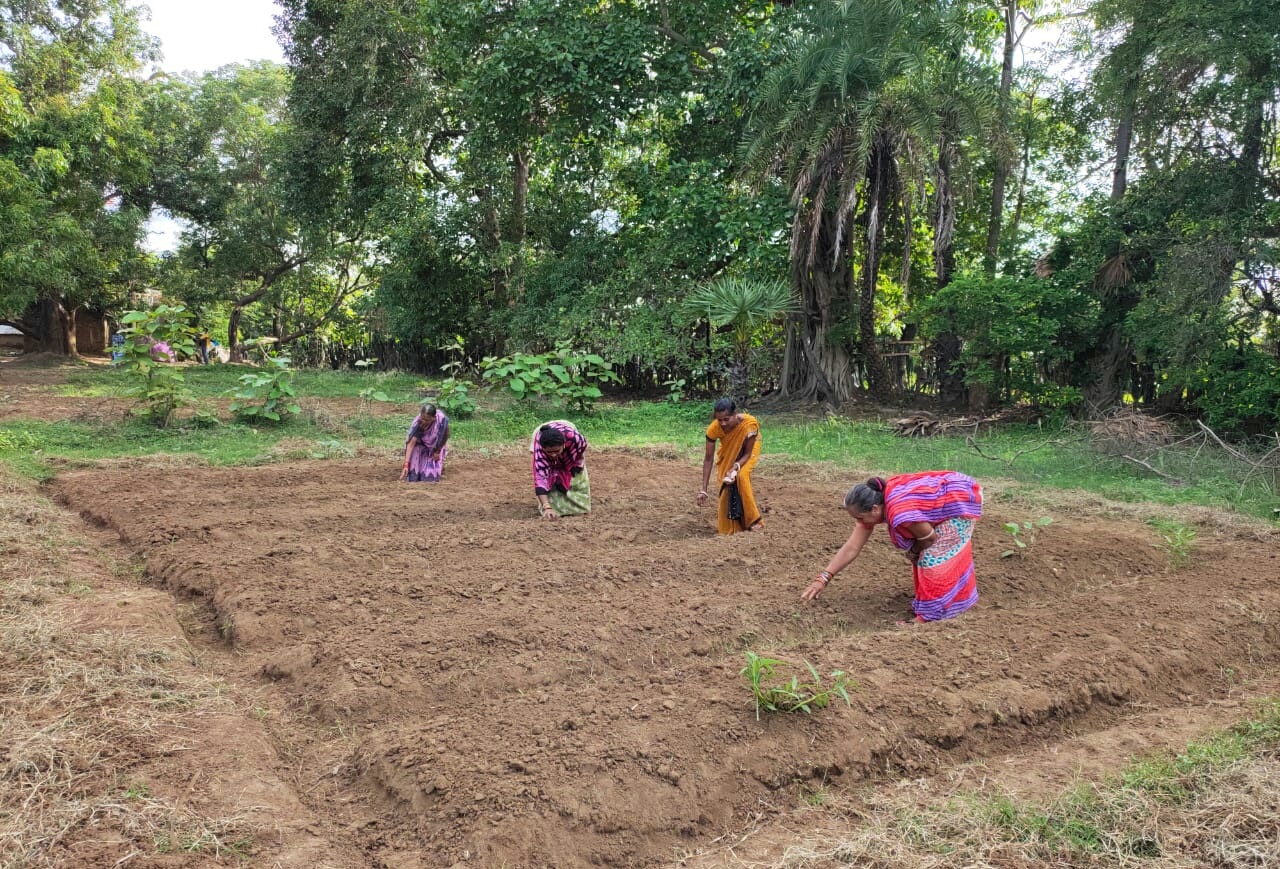
Jashoda Chandi of Hariharpur village in Lanjigarh is equally excited. Within three days she has also prepared her 2-decimals (about 870 square feet) nutri garden for sowing vegetables.
Pradhani and Chandi are part of the 2,000 beneficiaries in Lanjigarh block of the state who are set to receive seeds as well as banana plants from the Odisha Livelihoods Mission under the aegis of the Panchayati Raj and Drinking Water Department of the state government.
This is not all. Women across 750 gram panchayats of Odisha are either busy preparing new gardens or renovating those made last year as part of the “Mo Upakari Bagicha” project implemented by the Odisha Livelihoods Mission with support from the Azim Premji Philanthropic Initiatives.
However, since the activity involves earthwork, it has been converged with MGNREGA (Mahatma Gandhi National Rural Employment Guarantee Act) this year to promote livelihood opportunities among the rural poor in the post-COVID19 situation.
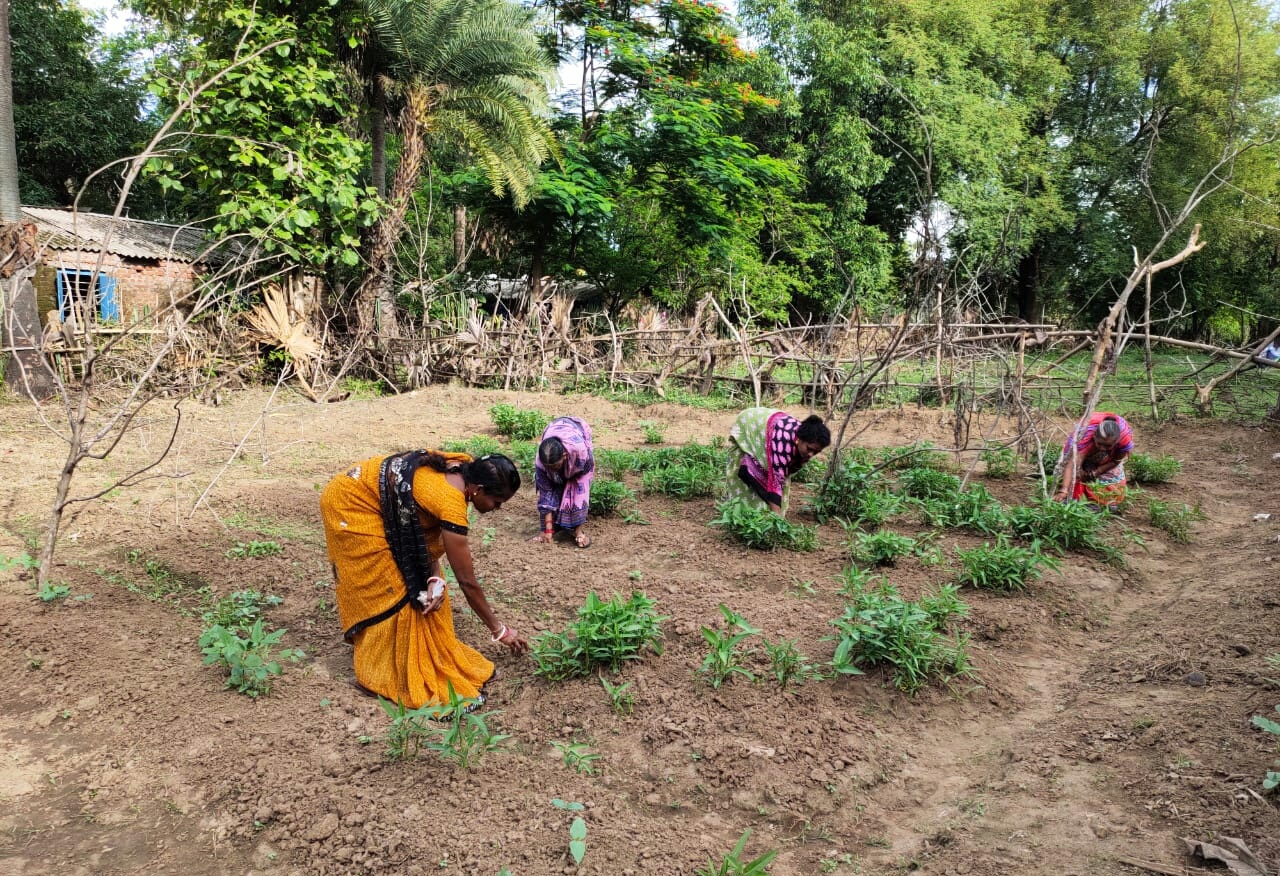
Last year, some 90,000 nutri gardens were prepared in the state and this year the target is five lakh. Along with nutri gardens, rural families are also being encouraged to rear poultry and goats for adequate nutrition and dietary diversity.
Basically two models of nutri gardens are being popularised — rectangular and circular, informed Dipali Khilo of Odisha-based non-profit Harsha Trust, which is overseeing the construction of nutri gardens. The organisation is one of the three resource non-profits working with the state livelihoods mission at the ground level. The other two are PRADAN (Professional Assistance for Development Action) and Living Farms.
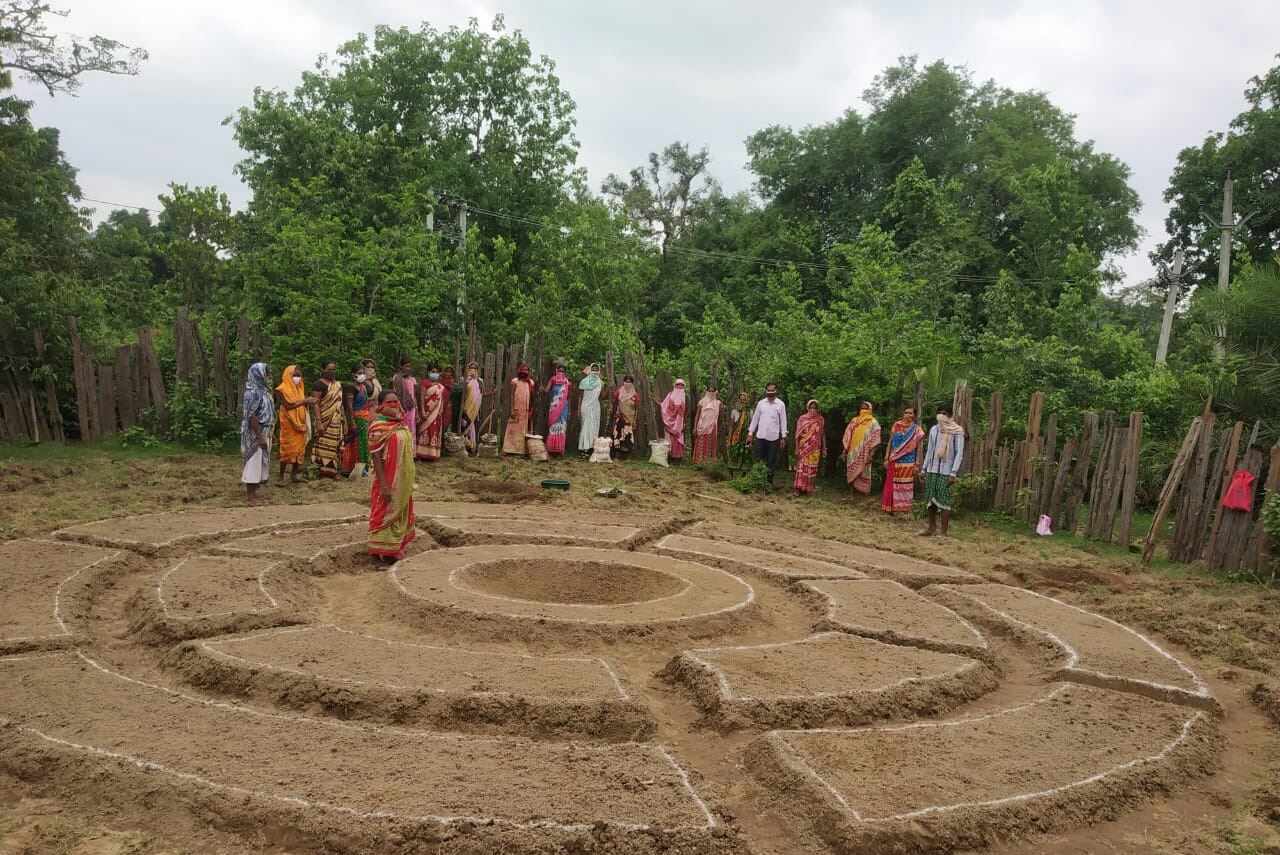
These nutri gardens are being made on plot sizes ranging from 2.5 to 3 decimals (1,000-1,300 square feet) on an average. “The rectangular shape with seven raised beds is being preferred more compared to the circular one because the former involves relatively easy layout and digging. But, the circular one looks better and it had a compost pit in the middle, last year,” Alok Kumar Swain of PRADAN told Gaon Connection.
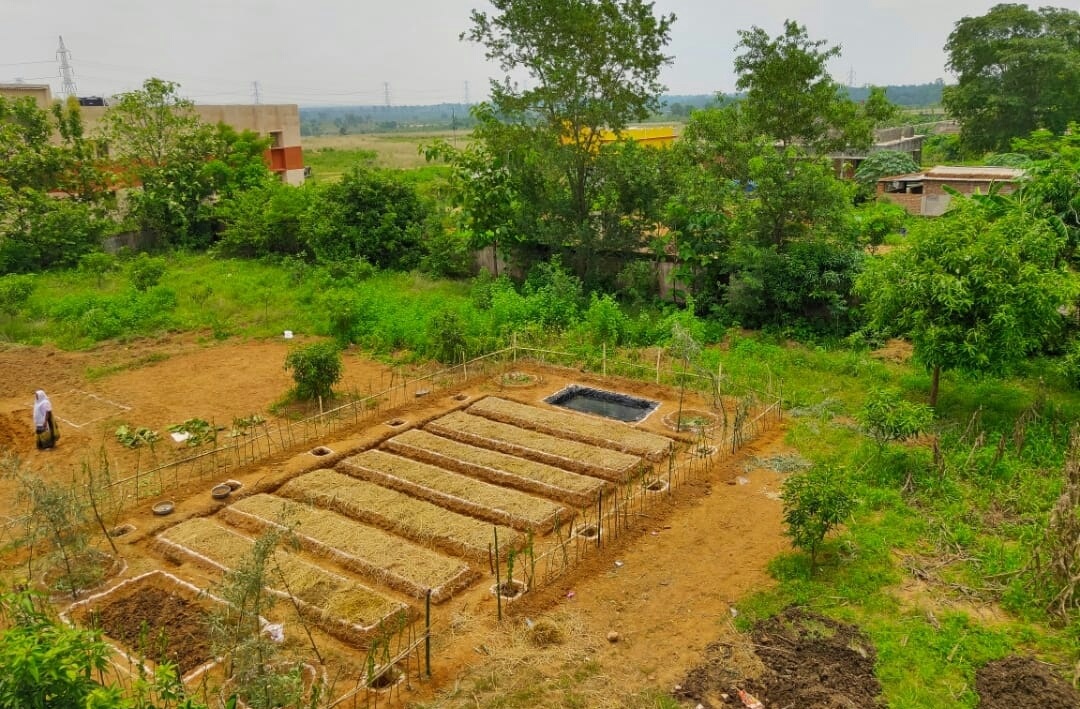
Women self-help groups have taken a lead in setting up of these gardens. “Most families preparing nutri gardens own land. Those who do not have lands are being encouraged to grow vegetables in either containers or gunny bags under the landless model,” Basanti Dureka of Dumaliguda village in Malkangiri told Gaon Connection.
In Malkangiri district, some women had prepared nutri gardens last year under the livelihoods mission. For instance, in Gourguda village of the district, sowing is on in Gouri Pradhan’s nutri garden where she had cultivated summer vegetables too. But this year, a few MGNREGA guidelines like the addition of compost pit and water storage pit are also being followed.
“This year 7,500 beneficiaries have been targeted and the response is positive. As part of vegetables, women get seeds of brinjals, chillies, ridge gourds, bottle gourds, amaranth saag and poi saag, to name a few,” Pabitra Mohan Bara, Malkangiri district project manager for the Odisha Livelihoods Mission told Gaon Connection.
Nutri gardens to tackle undernutrition
Odisha has a huge burden of undernutrition. Almost 51 per cent women between the ages of 15 and 49 are anaemic in the state, as noted in the National Family Health Survey 4 (NFHS-4) 2015-16. A UNICEF report says that food insecurity is prevalent among tribal groups and there is a high burden of stunting and wasting among children.
Living Farms, a Bhubaneshwar-based non-profit, conceptualised nutri gardens in 2008. In 2011, nutri garden was one of the strategies to improve the dietary diversity of rural communities in Rayagada district of the state.
“We worked in 100 villages from 2011 to 2016. The dietary diversity result was so positive that Azim Premji Philanthropic Initiatives partnered with us and scaled up our work from 100 to 2,000 villages in Rayagada and Kalahandi districts,” Debjeet Sarangi, founder of Living Farms told Gaon Connection.
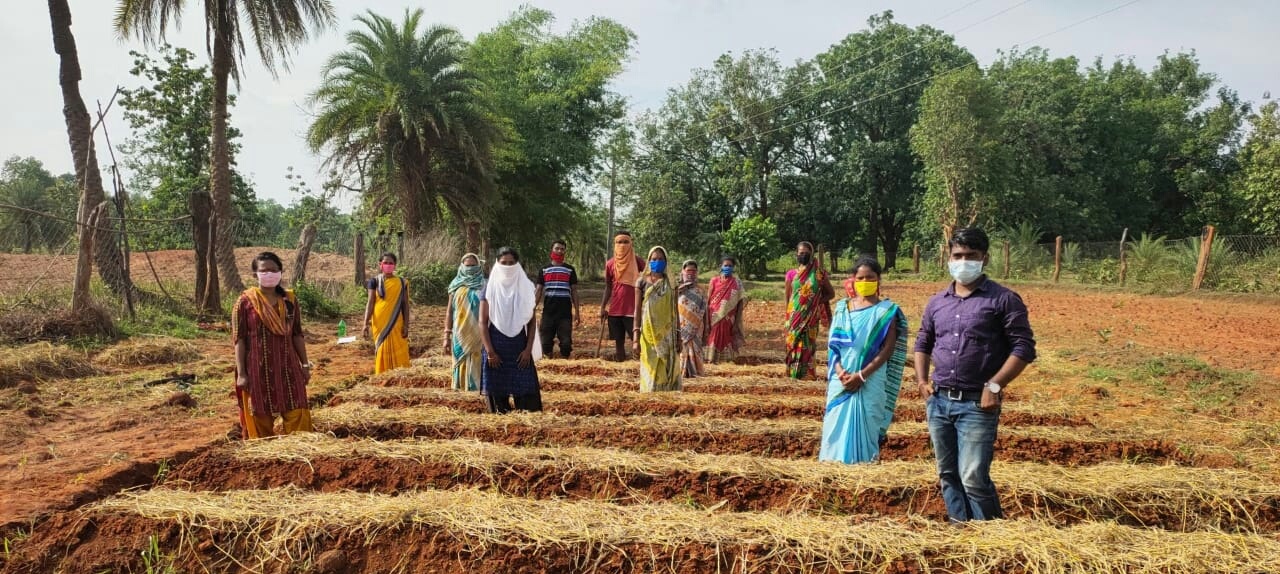
The entire process was part of a large-scale programme on addressing undernutrition, stunting, and wasting in these districts through the participatory learning action by linking agriculture and natural resources with nutrition.
“The impact evaluation was positive. Now, the Odisha Livelihoods Mission is scaling up nutri gardens through MGNREGA,” added Sarangi. The project named FAARM (Food and Agro-Ecological Approaches to Reduce Malnutrition) has been working with 1,16,000 Adivasi and Dalit families in 2,150 villages in Rayagada and Kalahandi.
Harsha Trust, a Bhubaneshwar-based non-profit, works in the southern and western parts of Odisha like Koraput and Kalahandi, which are vulnerable districts. Prior to joining the livelihoods mission, the organisation was promoting kitchen gardens and not nutri gardens.
“From the idea of nutri gardens, we started creating a prototype for vulnerable families under which they can grow some six to seven types of vegetables. It can also go up to 13 kinds at a time,” Gautam Kumar Pradhan of Harsha Trust told Gaon Connection. “We are also attempting to introduce livestock like poultry and goatery among landless people,” he added.
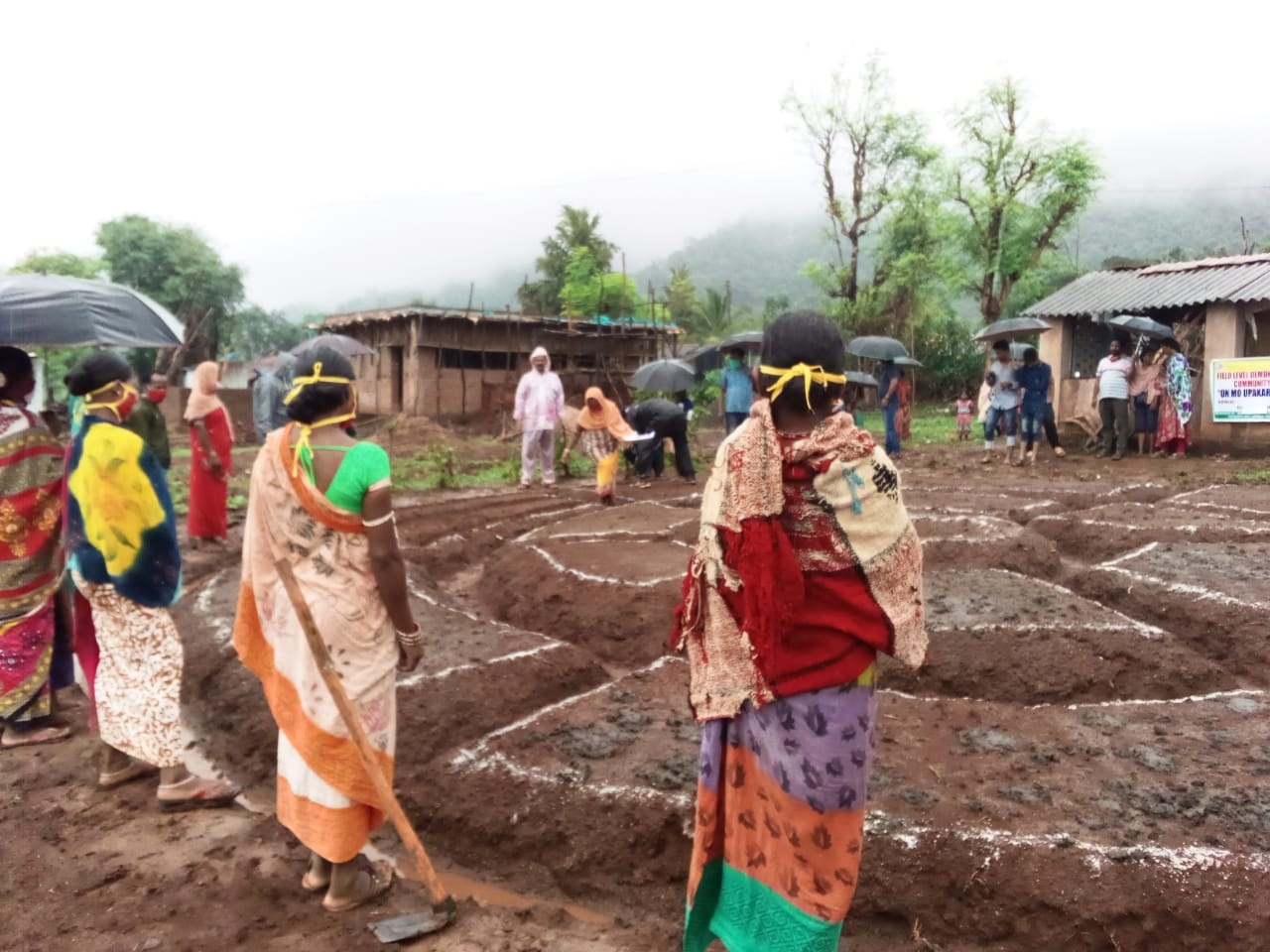
Explaining the basic difference between kitchen gardens and nutri gardens, he said: “In kitchen gardens, if a family likes to consume brinjals, it can cultivate it in large quantites, like growing 100 or even 200 plants. But our body needs 60 gm of brinjal. So, we need not eat brinjal every day and can grow 70 instead of 100 plants throughout the year,.”
According to Bara, the aim is to make Odisha malnutrition-free. The project is targeted at lactating mothers, pregnant women, under-five children, and adolescent girls. Though nutri gardens mainly target women, houses without women are not excluded.
In nutri gardens, the major focus is on nutrition, and thus, planning is essential. “As brinjals and tomatoes consume too much water, we combine ladies finger and brinjal in one bed in nutri gardens, as the former uses less water,” explained Pradhan.
It is a scientific way of designing gardens. Water-loving plants are grown near the water source whereas those using less water like ladies finger can be planted six feet away from the water source. Creepers also use less amount of water.
Scaling up the project
Debasis Mohapatra, state project manager at the Odisha Livelihoods Mission, said that with the onset of this year’s monsoon, work on nutri gardens has started. About one lakh nutri gardens have already been established across Odisha.
“The state government wants five lakh nutri gardens this year. The livelihoods mission has over three lakh self-help groups to make the project successful,” said Mohapatra. All three partnering non-profits have been asked to develop training modules for krishi mitras [farmers’ friends] regarding the design of nutri gardens, seed sowing and usage of organic manure, he added.
“There are three krishi mitras in every gram panchayat. Two prani mitras or livestock supporters in every gram panchayat are taking care of vaccination of goats and poultry,” said Mohapatra. This year, block development officers will procure and distribute seeds among rural communities.
The programme was started with the promotion of vegetables and fruits, but livestock was included too, for animal protein. The aim is to break the inter-generational malnutrition cycle. Around 12,000 people have been trained under this programme.
To document the impact of the nutri gardens, the partner non-profits conducted a survey — Minimum Dietary Diversity for Women — between October 2019 and February this year. This survey is an indicator to see whether women of reproductive age (15-49 years) have consumed at least five out of 10 defined foods on the previous day. Under this exercise, 2,250 sample households were covered across 45 blocks in 13 districts. The result showed that 37 blocks had reported positive changes. This survey is carried out every quarter.
According to Bijay Roul of PRADAN, the target is to reduce malnutrition and spread awareness on food diversity. “When we started, consumption was not the focus. The aim was to increase household income. But now food diversity has increased, but malnutrition has to be studied scientifically,” he said.
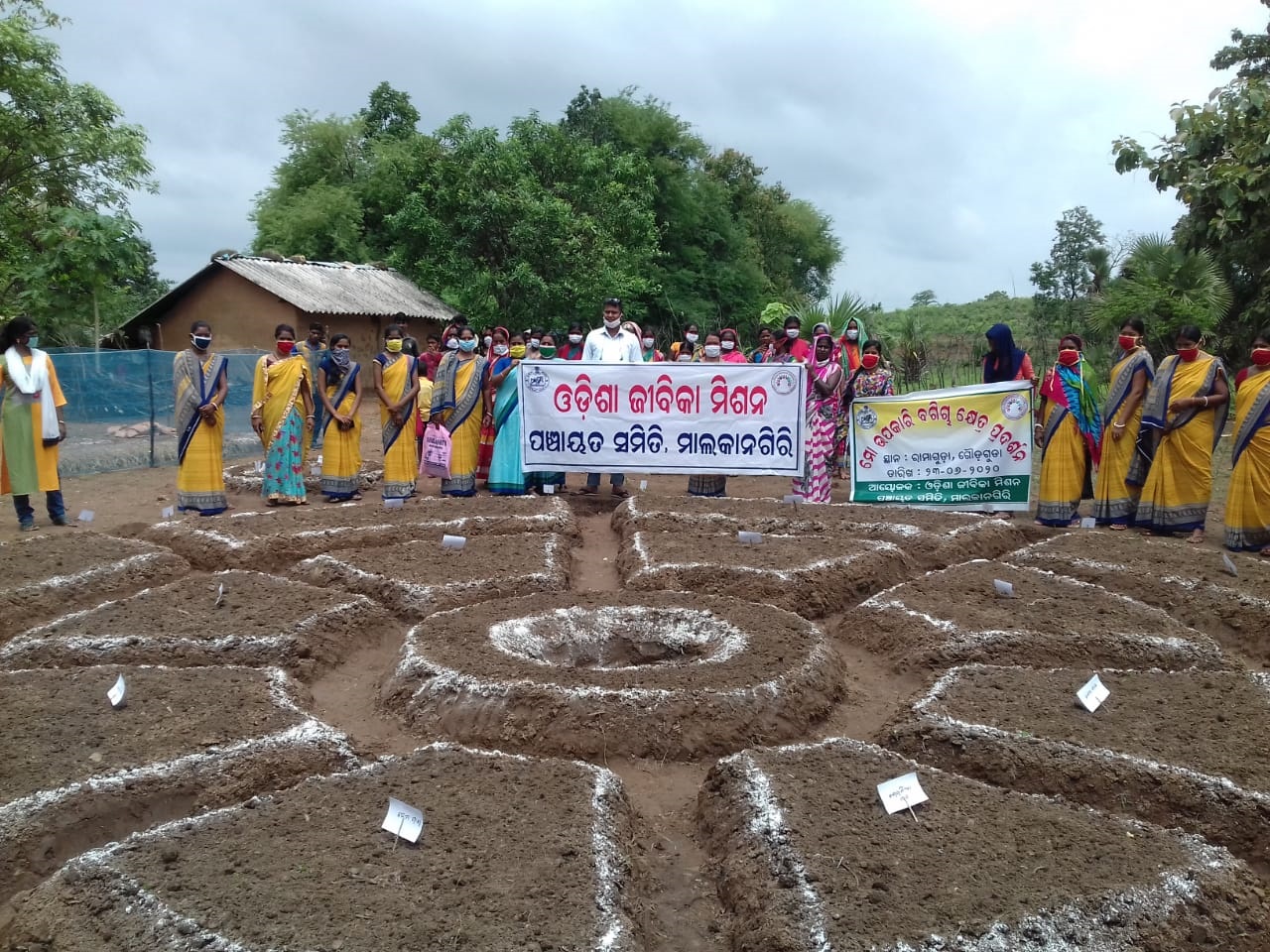
“Every season (summer, kharif and rabi), beneficiaries get 12-14 types of seeds. So, there is standing crop throughout the year in backyard nutri gardens,” he added.
This programme is also helping the landless as owning land is not a pre-requisite. “The landless model involves rows of plants grown in gunny bags. People who do not own land can have 10-12 such bags in a row. Under MGNREGA, live fencing or planting of forestry plants has been added which will act as a natural fence around nutri gardens,” informed Surjit Behera of PRADAN. Nutri gardens are the biggest nutrition programme in the country under which there is mass awareness generation on nutrition and health, setting up of nutri gardens, and rearing of livestock like poultry and goats, said Phalguni Sahu, an official with the Odisha Livelihoods Mission.

